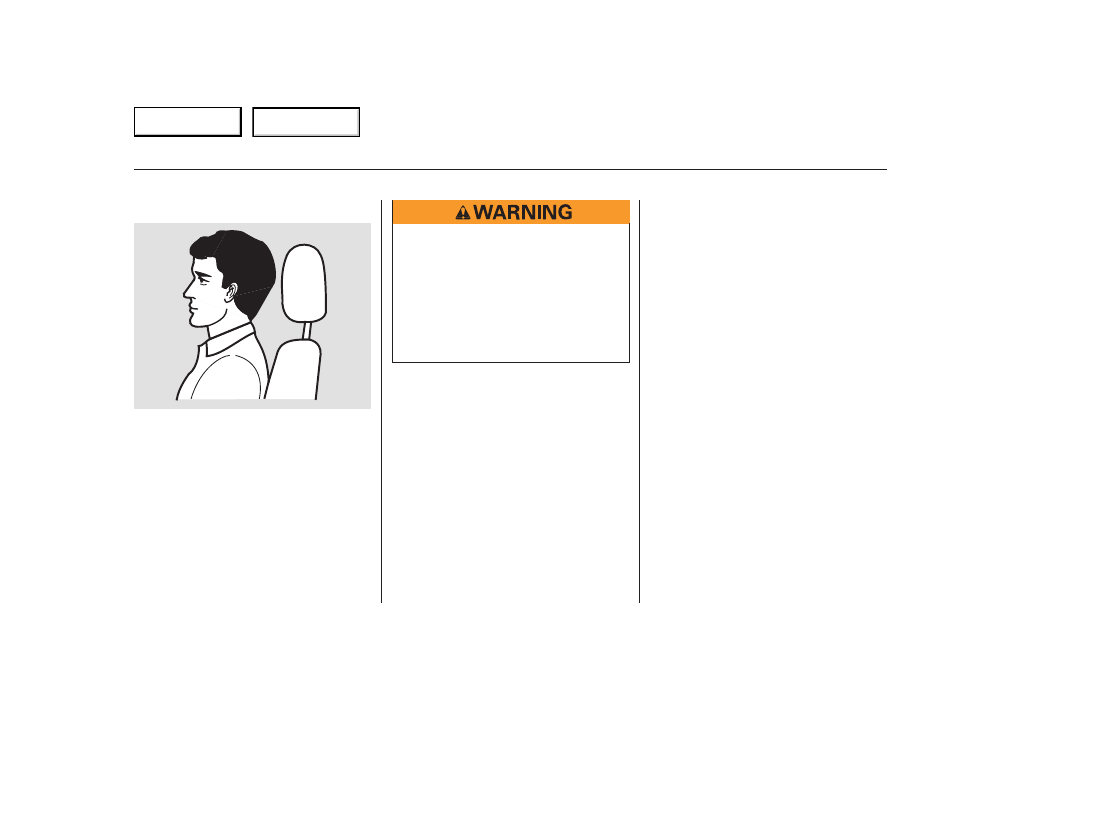Acura CL (2003 year). Manual - part 2

CONTINUED
Insert the latch plate into the buckle,
then tug on the belt to make sure the
belt is securely latched. Also check
that the belt is not twisted, because a
twisted belt can cause serious
injuries in a crash.
Properly adjusted head restraints
will help protect occupants from
whiplash and other crash injuries.
See page
for how to adjust the
head restraints.
Before driving, make sure everyone
with an adjustable head restraint has
properly positioned the head
restraint. The restraint should be
positioned so the back of the
occupant’s head rests against the
center of the restraint. A taller
person should adjust the restraint as
high as possible.
Driver and Passenger Saf ety
Protecting Adults
Fasten and Position the Seat
Belts
Adjust the Head Restraints
5.
.
15
Improperly positioning head
restraints reduces their
effectiveness and you can be
seriously injured in a crash.
Make sure head restraints are
in place and positioned properly
before driving.
Main Menu
Table of Contents